
In 1977, 14-year-old Maris Sienstecker read about a pregnant blue whale dying a slow death on a whaling dock. The story upset the teenager to such an extent that she and her mother resolved to help other marine mammals avoid a similar fate. Together they founded Save the Whales.
The Seaside, California organization dedicated its mission to protect ocean creatures from the whaling industry that nearly decimated them.
What’s the connection between leviathan lovers and purebred dogs?
Save the Whales inspired people to prevent other species they care about from disappearing.
Enter members of the Dandie Dinmont Terrier Club of America (DDTCA). They’re engaged in a historic mission to save the Dandies.
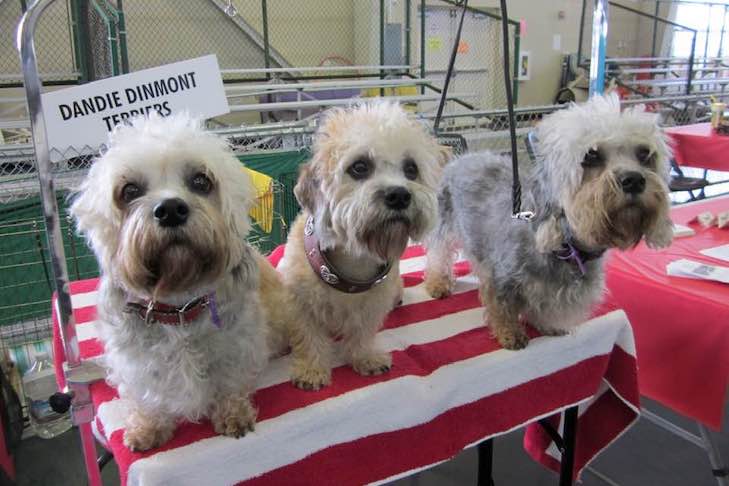
Of AKC’s 2019 registration statistics of 193 breeds, the Dandie ranked near the bottom of the popularity list at 174th.
“There are more Giant Pandas in the world than Dandie Dinmont Terriers,” says Betty-Anne Stenmark, a longtime Dandie breeder and AKC multiple breed judge in Grass Valley, California.
The fanciers of the 24-pound Dandie Dinmont Terrier share a passion for preserving this unique breed with a huge personality. The independent terrier with the big round dark eyes with a soft expression and distinctive large head covered in silky white hair captivate Dandie fans worldwide.
Sir Walter Scott owned the fun-loving dogs. He’s credited with naming the breed after creating Dandie Dinmont, a character in his 1815 novel “Guy Mannering.” First recorded as a distinct breed around 1700, the club refuses to accept the thought of losing the long and low-stationed working terriers.
In the mid-1990s, club members realized the number of their beloved plucky terriers had steadily declined since the 1960s. Dandie people recognized the need to preserve their breed but understood the goal wouldn’t come fast or easy.
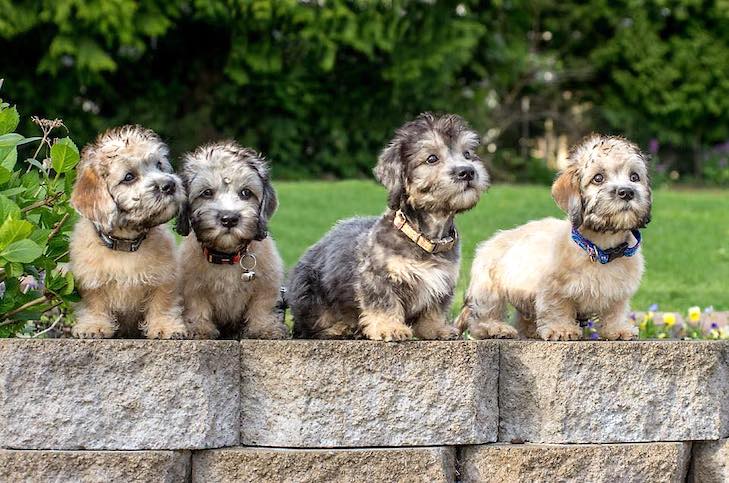
Starting on the Right Paw
“I felt my job was to create awareness of the situation,” says Jody Moxham, a Dandie Club board member who bought her first Dandie 35 years ago. “In 1997, the club began a movement called ‘Reverse the Trend.'”
Breeders increased their breeding programs by building relationships with Dandie breeders around the world. Importing and exporting dogs added to the gene pool.
“For four or five years, Dandie numbers increased before they leveled off,” says Moxham of Canoga Park, California. “Reverse the Trend was working, so breeders moved on, and we stopped promoting the cause.”
Dandie numbers fell again. Four years ago, Barbara Baese, President of the Dandie Dinmont Club of America, decided it was time to act before the breed was gone forever. Baese asked Moxhom to prepare an advertisement in the club’s newsletter about the low numbers.
“There are people who want Dandies, but not enough puppies or breeders,” says Sandra Pretari Hickson, DDTCA board member and Editor of Mustard and Pepper, the club’s quarterly publication. “A lot of our breeders have passed on and we get more requests for puppies than we can fill.”
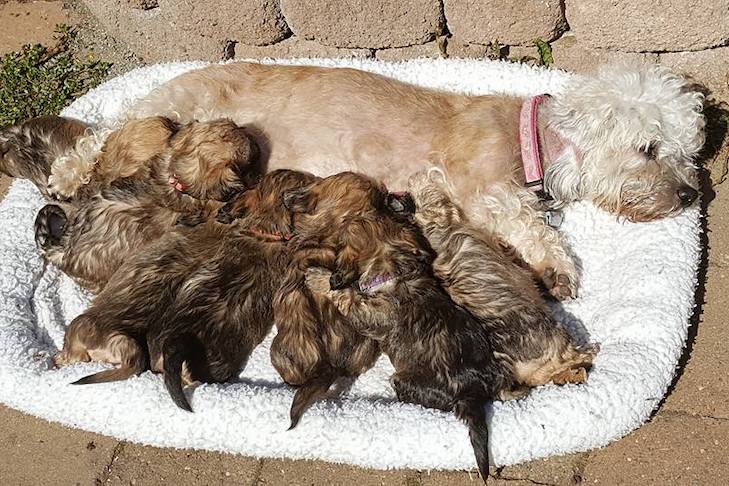
Dandie moms produce an average of three pups per litter, and like other breeds that whelp small litters, every missed breeding is a missed opportunity.
Moxham, the founder and CEO of an international corporation, applied her expertise of how to change a trend. In mid-2016, six DDTCA members formed the Strategic Advisory Committee to create breed awareness and to ensure breed survivability.
“There were lots of ideas about what to do and how to do it, but we turned to how a business might approach the dilemma,” says Moxham. “It’s important to understand the dynamics of a problem.”
The committee conducted a survey among DDTCA members and friends to identify the barriers to breeding. It included questions such as acquaintance with the breed, how they acquired a Dandie, and interest in breeding. The committee received an overwhelming number of responses.
God Loves a Terrier
In 2017, to widen the circle of potential Dandie owners, the club increased its outreach efforts. They began by developing professional booths with colorful photos to take into the public. Introducing the personable little dogs at Meet the Breeds, Celtic Games, and other venues gave people a chance to see Dandies up close and to talk about why this breed is so special.
“We handed out thousands of breed brochures with contact information for DDTCA breeders,” says Moxham. “We answered questions and didn’t just talk about the breed standard.”
The board added the non-show, Dandie Tartan Parade at Specialties, held barbecues, and fun activities with the dogs. Another addition included more articles for pet and show owners to the Mustard and Pepper, the DDTCA’s publication.
“We reinvented ourselves as a community of Dandie Lovers,” says Moxham.
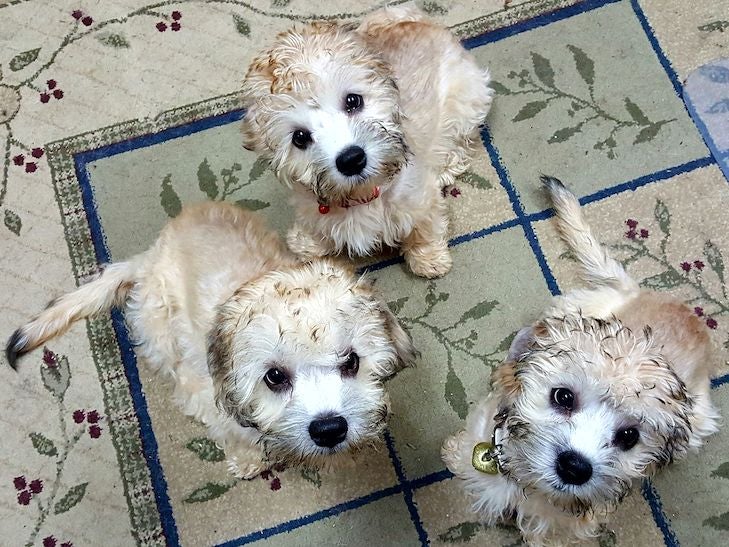
Proof of Concept
Are the DDTCA’s efforts making a difference?
“We wanted to expand DDTCA’s appeal, welcome all Dandie owners, and not only be known as an elitist group,” adds Moxham. “Last year, we added more members in one quarter than in the whole year before.”
The first survey revealed that one person out of every five who gets a Dandie becomes a casual breeder. From there, part of that population becomes a serious breeder.
To DDTCA, increasing Dandie numbers means retaining the breed’s temperament, health, and sound movement.
“The numbers have to mean quality,” says Moxham.
To create a more knowledgeable core of new breeders, DDTCA incorporated the business concept of Knowledge of Harvesting. It connected with a panel of 100 expert breeders globally and in the U.S. to accelerate the learning curve and provide valuable information about what it takes to produce a successful litter.
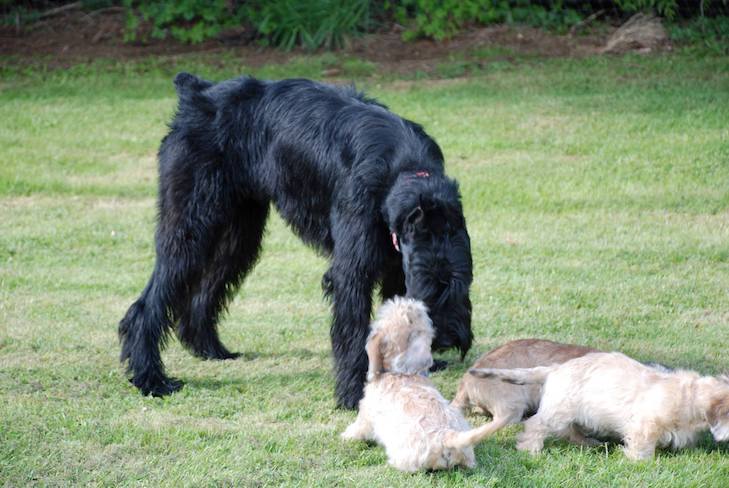
“To double-down on breeding more Dandies, the club reached out to seasoned show breeders of other breeds to take on a Dandie and breed a litter,” says Stenmark.
Cathi Tower, a Giant Schnauzer breeder in Monroe, Washington, fell in love with Dandies at a dog show and decided to add them to her household.
“They look put together by committee, and their jaunty attitude and confidence appealed to me,” says Tower. “I like grooming a dog, so keeping a Dandie’s coat didn’t scare me.”
Working with a breeder here and in Ireland, Tower has bred five litters to contribute to the gene pool.
“With one litter a year for five years, I’m proud of the quality,” says Tower. “Sure, it’s a drop in the gene pool, but we met health clearances, they’re all in the right homes, and are a credit to the breed.”

